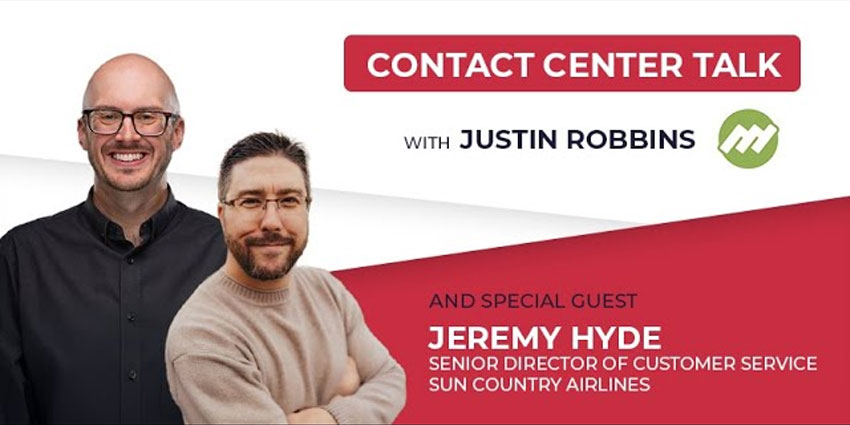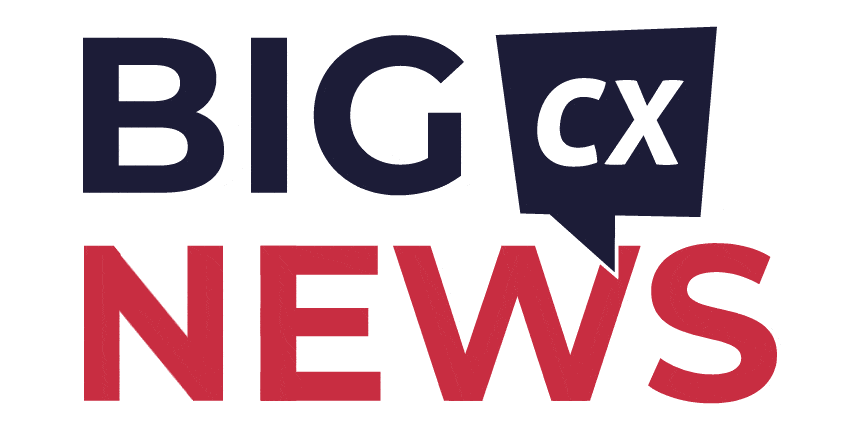Building a great contact center culture is complicated. It’s not as simple as just walking into a space and being a cheerleader or focusing solely on being a great coach. It’s not any one thing in isolation.
Instead, culture building starts with a leader who steps back and sees the whole picture, balancing the needs of the business with creating an environment where people can thrive.
Of course, that’s easier said than done. Yet, Jeremy Hyde, Senior Director of Customer Service, has learned many tricks of the trade in his time leading contact center teams.
He joins the latest episode of CX Today’s Contact Center Talk miniseries to share those best practices with host Justin Robbins, Founder & Principal Analyst at Metric Sherpa.
The conversation is available below, alongside a written rundown of the key talking points.
1. Connect Culture with the Broader Organizational Goals
A foundational aspect of creating a culture that resonates, not just with employees but also with those outside the contact center, is aligning it with the organization’s broader values.
Doing so ensures that culture extends beyond what happens “inside the call queues.”
Hyde recognized the importance of this when assessing the results of Sun Country Airlines’ annual employee satisfaction survey.
It highlighted the need for employees to feel connected to a bigger goal, understanding how their work fits into something larger than just completing tasks.
In the contact center space, this is a common challenge. It can be hard for employees to grasp the bigger picture and truly connect with the “why” behind what they’re doing.
So, as Sun Country Airlines refreshed its organizational values, Hyde evolved the contact center’s employee value proposition, translating those values into behaviors.
The effort has helped the organization bridge that gap and align its culture more closely with its broader mission.
2. Outline the “We Win When…” Moments
Sun Country Airlines is running an exercise to identify each contact center role’s current tasks, goals, and performance measures.
It then asks: how do these align with our organizational values and employee value proposition?
From there, the airline outlines the “We win when…” moments. This helps everyone recognize what success looks like – both for the team and for the business.
As a result, each person understands their role in making that success possible.
In doing so, leaders may also consider “intentional pre-decisions”, so they have already determined how they will react when particular situations arise.
These pre-decisions help leaders stay focused on what matters most – achieving those wins – and avoid getting lost in the moment.
3. Commit to Smart Experiments
Many contact center supervisors fall into the trap of “aimless wandering”. That comes with being told to do something without clarity or not knowing why they’re doing it.
As a result, the measure of their success becomes activity – i.e., the number of team meetings they hold, coaching sessions they run, etc. – without actually moving forward.
That’s the risk of taglines, promises, or mission statements that are just words. They aren’t connected to or reinforced by the rituals of the business, things like incentives, coaching, or daily practices.
A better approach is purposeful exploration. This involves clearly defining their priorities, encouraging “smart experiments”, and helping them understand what to look for and expect.
In doing so, teams can build successful experiments into their muscle memory.
4. Develop Connections to Avoid Isolationism
Remote environments lack informal social interaction, whether that’s bumping into someone while grabbing coffee or overhearing an insightful comment because someone’s sat nearby.
Ultimately, this leads to more isolation, meaning contact centers must work harder and be more intentional about fostering connections.
As such, Hyde strives to create engagement activities that align with Sun Country Airlines’ culture, leaning into travel-related themes.
For instance, he encourages staff to share pictures and stories about places they’ve visited. Also, when new employees join, the airline engages with them about their bucket-list destinations.
Hyde considers two key questions when running such activities:
- What specific connections can we build on behalf of the team? This could help guide a mentorship program or something similar.
- How can we create opportunities for employees to form relationships without trying to manage them directly?
The second point is crucial in that many leaders take on unnecessary burdens by trying to control too much.
Instead, contact center leaders should focus on shaping virtual spaces where employees can feel like they belong and are growing.
5. Consider the People Behind the Metrics
Years ago, Sun Country Airlines had a contact center attrition problem, sending its leaders on an analysis spiral, assessing:
- Who are the people staying?
- Who are the ones leaving?
- What’s different about their experiences, wants, expectations, and requirements?
Eventually, Hyde realized that if the airline could identify a clear trend, the “why” might not matter as much as acknowledging the pattern.
In doing so, his team found that a specific type of employee didn’t fit the organization. Instead of forcing that fit, the airline decided to stop hiring that type of employee.
Meanwhile, Sun Country Airlines also identified the types of employees who thrived in the role.
For example, part-time employees who work from home and love to travel tend to love working there. They’re far less likely to leave, especially if they make it past the first 90 days.
So, the company’s focus soon became clear: understand who we are as an organization, define our value, and target the people likely to succeed and enjoy being here.
6. Reinvent the Suggestion Box
Sun Country Airlines implemented a virtual suggestion box process. But it’s not the usual, ineffective suggestion box where leaders never hear back, and nothing ever happens.
Here’s how it works: every Monday morning, the leadership team reviews new submissions and open items. Hyde then assigns each suggestion to a leader who can investigate, and every single submission gets a response – whether the contact center decides to act on it or not.
The contact center also sends out a monthly newsletter to everyone, detailing the suggestions it received, the actions it took, and the responses it gave.
In doing so, leaders show employees that they are listening, taking actions, and care about them.
The process often surfaces excellent ideas or highlights issues leadership either didn’t know about or hadn’t realized were so acute.
7. Prioritize Peer Recognition
Leader recognition is great, and every contact center should continue doing it. But peer recognition just hits differently.
When a colleague notices and acknowledges something the agent has done – especially the things they might not even realize are special – it’s incredibly meaningful.
For example, if someone says: “Justin, the way you supported me when I was struggling with that customer situation really helped,” it creates a deeper connection.
Building those relationships and fostering that sense of belonging is essential.
When a colleague shows gratitude, it strengthens their connection to the organization. It’s powerful and simple.
To enable this, Sun Country Airlines has managers send a weekly reminder asking: “Do you want to recognize a peer?”
They collect the responses and post them in a Teams channel, tagging the person being recognized.
What’s amazing is how others jump in to add their own stories. It creates this wave of positivity and is as simple as gathering feedback and sharing it.
Don’t miss the final episode of the Contact Center Talk miniseries. Sign up for CX Today’s Newsletter.
Alternatively, to catch up on previous episodes, check out the conversations below:
- 10 Best Practices for Contact Center Quality Assurance in 2025
- 7 Best Practices for Contact Center AI in 2025
- 6 Best Practices for the Work-From-Home (WFH) Contact Center in 2025
- 7 Best Practices for Contact Center Workforce Management (WFM) in 2025








